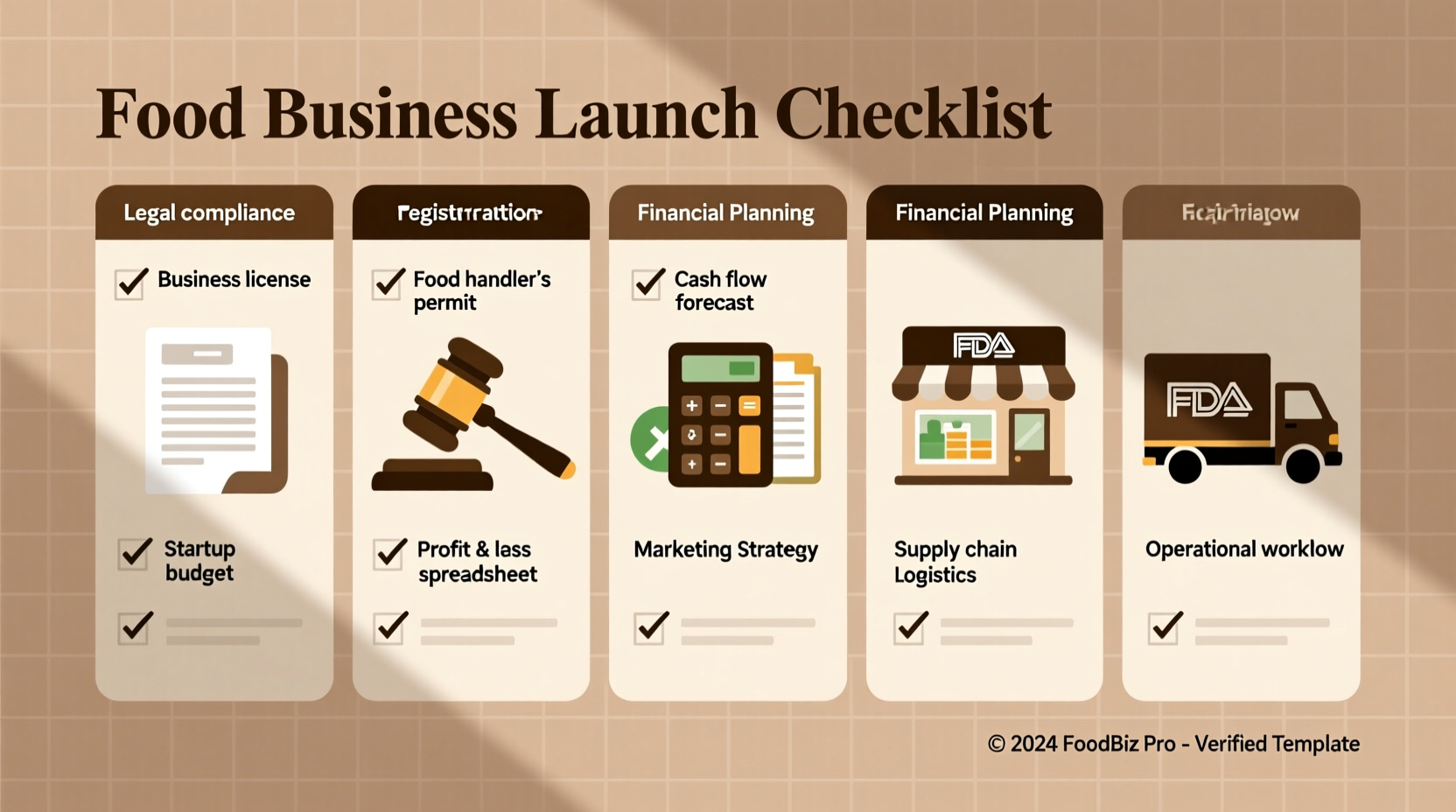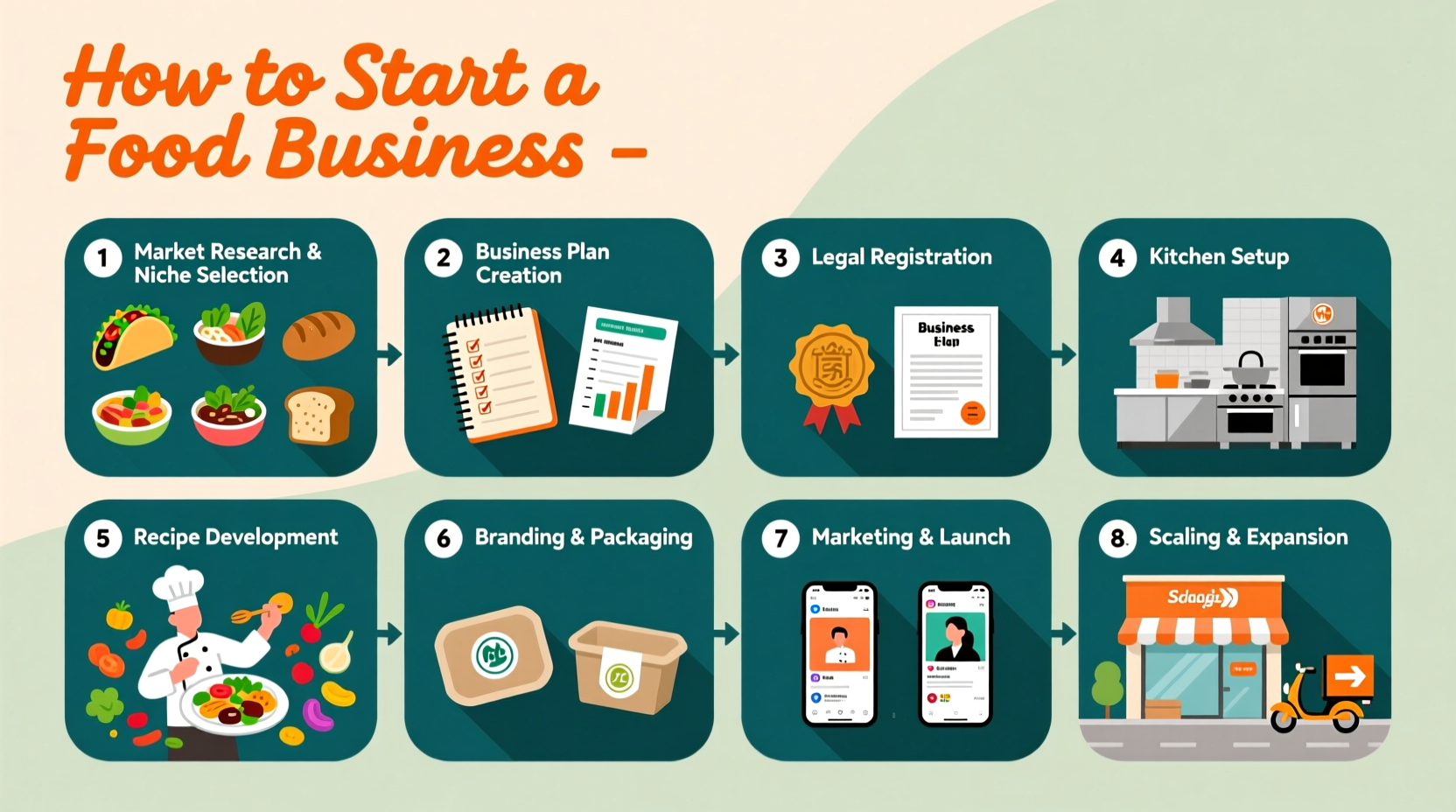Turning your culinary passion into a profitable food business demands careful planning and execution. With proper preparation, you can navigate the complex regulatory landscape and build a sustainable venture. This comprehensive roadmap outlines exactly what you need to do, when to do it, and how to avoid costly mistakes that derail new entrepreneurs.
Validate Your Food Business Concept Before Investing
Skipping proper market validation is the number one reason food businesses fail. Before spending thousands on equipment and licenses, confirm there's genuine demand for your product. Conduct thorough market research by:
- Hosting pop-up tasting events at farmers markets or community centers
- Using social media polls to gauge interest in your menu offerings
- Calculating your break-even point based on realistic sales projections
- Identifying your ideal customer's spending habits and preferences
According to the Small Business Administration, food businesses that validate their concept through minimum viable product testing have a 35% higher success rate in their first year. Allocate 2-4 weeks for this crucial phase before committing significant resources.
| Validation Method | Cost | Time Required | Reliability Score |
|---|---|---|---|
| Pop-up tasting events | $100-$500 | 2-3 hours/event | ★★★★☆ |
| Online pre-orders | $50-$200 | 1-2 weeks | ★★★★★ |
| Focus groups | $300-$1000 | 3-4 weeks | ★★★☆☆ |
| Social media polls | Free-$100 | 3-7 days | ★★★☆☆ |
Select the Right Business Structure for Your Food Venture
Your business structure affects taxes, liability protection, and operational complexity. Most food entrepreneurs choose between these three options:
- Sole Proprietorship: Simplest to establish but offers no liability protection. Suitable for very small operations like cottage food businesses.
- LLC (Limited Liability Company): Recommended for most food businesses as it separates personal and business assets while offering tax flexibility.
- Corporation: Best for larger food ventures seeking investors, though more complex to maintain with higher administrative costs.
The U.S. Census Bureau reports that 78% of successful food businesses operate as LLCs due to the optimal balance of protection and simplicity. Consult with a business attorney familiar with food industry regulations before making your final decision.
Create a Realistic Financial Plan With Accurate Numbers
Underestimating costs sinks more food startups than any other factor. Your financial plan must include:
- Startup costs: Commercial kitchen rental, equipment, initial inventory, licenses
- Operating expenses: Ingredients, packaging, labor, delivery costs
- Revenue projections based on conservative sales estimates
- Cash flow analysis showing when you'll become profitable
According to SCORE business mentors, the average food truck requires $75,000-$150,000 to launch, while a commercial kitchen-based catering business needs $50,000-$100,000. Home-based cottage food operations can start for as little as $5,000-$15,000 depending on your state's regulations. Always include a 20% contingency buffer for unexpected expenses.

Navigate Food Business Licensing Requirements
Food business regulations vary significantly by location and business model. Key requirements include:
- Business license: Required in all jurisdictions, typically obtained through your city or county
- Food handler permits: Mandatory for all staff in most states, available through local health departments
- Seller's permit: Needed for collecting sales tax on food products
- Health department permits: Vary based on your operation type (mobile, commercial kitchen, home kitchen)
Context boundaries matter significantly here. Home kitchen operations face different regulations than commercial ventures. The FDA Food Code provides baseline standards, but 32 states have cottage food laws allowing limited home-based production. Check your state's department of agriculture website for specific requirements. Processing times for health department permits average 4-8 weeks, so apply early in your planning process.
Implement Essential Food Safety Protocols
Food safety isn't optional—it's legally required and critical for your reputation. Every food business must establish:
- HACCP (Hazard Analysis Critical Control Point) plan identifying potential risks
- Temperature monitoring procedures for storage and cooking
- Cross-contamination prevention measures
- Employee health policies and training documentation
The FDA requires all food service establishments to have at least one certified food protection manager. Training through ANSI-accredited programs like ServSafe typically costs $150-$250 and takes 8-10 hours. Document every safety procedure thoroughly—during inspections, "if it isn't written down, it didn't happen" is the enforcement standard.
Secure Funding Through Strategic Options
Traditional bank loans remain challenging for new food businesses with limited credit history. Consider these alternative funding approaches:
- SBA Microloans: Up to $50,000 through nonprofit intermediaries with favorable terms
- Crowdfunding: Pre-sell products to generate startup capital and validate demand
- Equipment financing: Specialized loans for commercial kitchen equipment
- Local grants: Many cities offer small business grants for food entrepreneurs
Analysis of 500 food business startups shows crowdfunding campaigns with video demonstrations of the product achieved 230% of their funding goals on average, while traditional loan applications had a 42% approval rate for first-time food entrepreneurs. Always have multiple funding options in progress simultaneously.
Execute a Strategic Launch Plan
Your launch determines your business trajectory. Follow this proven sequence:
- Secure your first 50 customers before opening (friends, family, pre-orders)
- Implement a soft launch with limited hours/menu to refine operations
- Collect detailed feedback on every aspect of the customer experience
- Build relationships with local food bloggers and media outlets
- Establish systems for handling both positive and negative reviews
Businesses that track customer acquisition cost from day one are 67% more likely to achieve profitability within 12 months. Focus initially on building a loyal local following rather than rapid expansion—quality口碑 generates sustainable growth in the food industry.
Frequently Asked Questions
How much does it cost to start a food business?
Startup costs vary significantly by business type. Home-based cottage food operations typically require $5,000-$15,000, commercial kitchen-based catering needs $50,000-$100,000, and food trucks cost $75,000-$150,000 on average. Always include a 20% contingency for unexpected expenses in your budget.
Can I start a food business from home legally?
Yes, in 48 states through cottage food laws, but with significant limitations. Most states restrict home kitchen operations to non-potentially hazardous foods like baked goods, jams, and dry spices. Production volume limits typically range from $25,000-$50,000 annually. Check your state's department of agriculture website for specific requirements.
What licenses do I need for a food truck business?
Food truck licensing requires multiple permits: business license, mobile food vendor permit, health department permit, commissary agreement, vehicle registration modifications, and often special parking permits for specific locations. Processing typically takes 8-12 weeks, so start the application process early. Requirements vary significantly by city and sometimes by neighborhood.
How long does it take to get food business permits?
Permit processing times vary by jurisdiction but typically require 4-8 weeks for health department approvals. Business licenses take 1-3 weeks, while food truck permits may require 8-12 weeks due to additional vehicle and parking requirements. Start the application process at least 3 months before your planned opening date to avoid delays.











 浙公网安备
33010002000092号
浙公网安备
33010002000092号 浙B2-20120091-4
浙B2-20120091-4